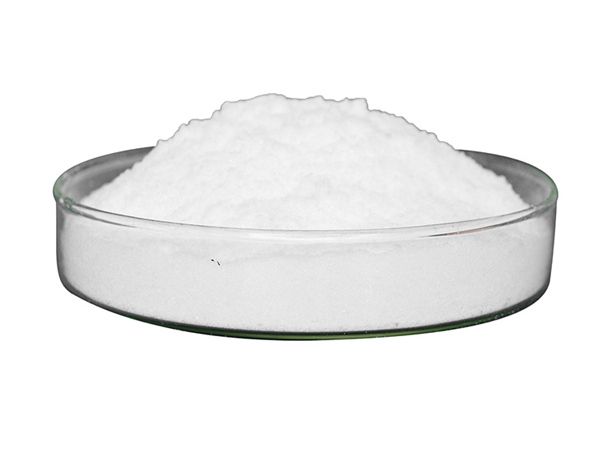Your Position: Home - Chemicals - The Versatility of 30% Salicylic Acid: Applications and Benefits
Salicylic acid, a beta-hydroxy acid derived from willow bark, is renowned for its multifaceted applications in various industries. In its concentrated form, such as a 30% solution, salicylic acid finds use in diverse fields due to its exfoliating, anti-inflammatory, and antimicrobial properties. Let's explore the wide-ranging applications and benefits of 30% salicylic acid:
1. Dermatological Treatments:
Chemical Peels:
In dermatology, 30% salicylic acid is often employed as a chemical peel agent. It facilitates controlled exfoliation, aiding in the removal of dead skin cells. This process can improve skin texture, reduce the appearance of fine lines, and address issues like acne and hyperpigmentation.
Acne Treatment:
Salicylic acid is a staple in acne treatment formulations. At a 30% concentration, it can penetrate the pores deeply, exfoliating within the follicles and helping to prevent the formation of comedones (blackheads and whiteheads).
2. Wart and Callus Removal:
Topical Solutions:
Salicylic acid at 30% concentration is utilized in over-the-counter and prescription topical solutions for the removal of warts and calluses. Its keratolytic action softens and loosens the affected skin, aiding in the removal of these common skin conditions.
3. Anti-Inflammatory and Analgesic Applications:
Pain Relief Patches:
Salicylic acid, known for its anti-inflammatory properties, is incorporated into pain relief patches. These patches are applied topically to provide localized relief for conditions such as joint pain, muscle soreness, or arthritis.

4. Hair Care Products:
Scalp Treatments:
In the realm of hair care, 30% salicylic acid may be included in specialized scalp treatments. Its exfoliating properties can help address conditions like dandruff and seborrheic dermatitis, promoting a healthier scalp.
5. Foot Care Products:
Corn and Callus Removers:
Salicylic acid's ability to soften and break down keratin makes it a key ingredient in foot care products designed to remove corns and calluses. These products, often available in the form of patches or solutions, aim to enhance foot comfort.
6. Preservation of Skincare and Cosmetic Products:
pH Adjustment:
In skincare and cosmetic formulations, salicylic acid at lower concentrations is sometimes used to adjust the pH of products. This serves both as a pH regulator and a contributor to the overall efficacy of the formulation.
7. Caution and Considerations:
Professional Guidance:
The use of 30% salicylic acid should be approached with caution, especially in at-home treatments. Professional guidance is recommended to ensure proper application, minimize potential side effects, and address individual skin sensitivities.
Potential Irritation:
Higher concentrations of salicylic acid can be more irritating to the skin. Individuals with sensitive skin or pre-existing skin conditions should exercise caution and consider lower concentrations for milder effects.
8. Conclusion:
A Multipurpose Solution:
30% salicylic acid stands as a versatile solution with applications ranging from dermatological treatments and wart removal to pain relief patches and foot care products. Its efficacy lies in its ability to address various skin concerns, making it a valuable ingredient in the fields of skincare, dermatology, and beyond.
Caution and Expert Advice:
While 30% salicylic acid powder offers numerous benefits, users should exercise caution and seek professional advice, particularly when using higher concentrations. Understanding individual skin needs and potential sensitivities is crucial for a safe and effective experience.
258
0
0
Comments
All Comments (0)
Related Articles
Introduction to CAS 2381089-83-2 LY3437943 Wholesale high purity
LY3437943 is a triple agonist peptide of the glucagon receptor (GCGR), glucosedependent insulinotropic polypeptide receptor (GIPR), and glucagon-like peptide-1 receptor (GLP-1R). LY3437943 inhibits for human GCGR, GIPR, and GLP-1R with EC50 values of 5.79, 0.0643 and 0.775 nM, respectively.
By CC
300
0
0
What Does Praziquantel Treat in Animals?
Praziquantel, a widely used anthelmintic medication, is a crucial tool in veterinary medicine for treating parasitic infections in animals. It is highly effective in combating a range of internal parasites and plays a significant role in ensuring the health and well-being of our beloved pets.
By CC
280
0
0
5 Uses of Benzocaine
Benzocaine is a local anesthetic that belongs to the ester-type anesthetic class. It is commonly used for its numbing properties, providing relief from pain or discomfort in various applications. Here are five common uses of benzocaine
By Hou
303
0
0
Fine art paper and photo paper: what is the difference?
By Ingrid
265
0
0
What Is The Synthesis And Application of PMK Ethyl Glycidate?
PMK ethyl glycidate, also known as ethyl 3-(1,3-benzodioxol-5-yl)-2-methyloxirane-2-carboxylate, is a key intermediate used in the synthesis of various drugs and chemicals. It is a vital compound in the production of certain pharmaceuticals, perfumes, and flavoring agents. In this article, we will discuss the synthesis and application of PMK ethyl glycidate.
By Ingrid
212
0
0
Comparing Hpmc vs Caulking Gypsum: Which is Superior?
1.
By Geoff
186
0
0
Comparing Hpmc vs Traditional Additives for Etics/Eifs Mortars
When it comes to choosing the right additives for External Thermal Insulation Composite Systems (ETICS) or External Insulation Finishing Systems (EIFS) mortars, contractors and builders are often faced with the decision between traditional additives and newer options like Hydroxypropyl Methylcellulose (HPMC).
By Marina
189
0
0